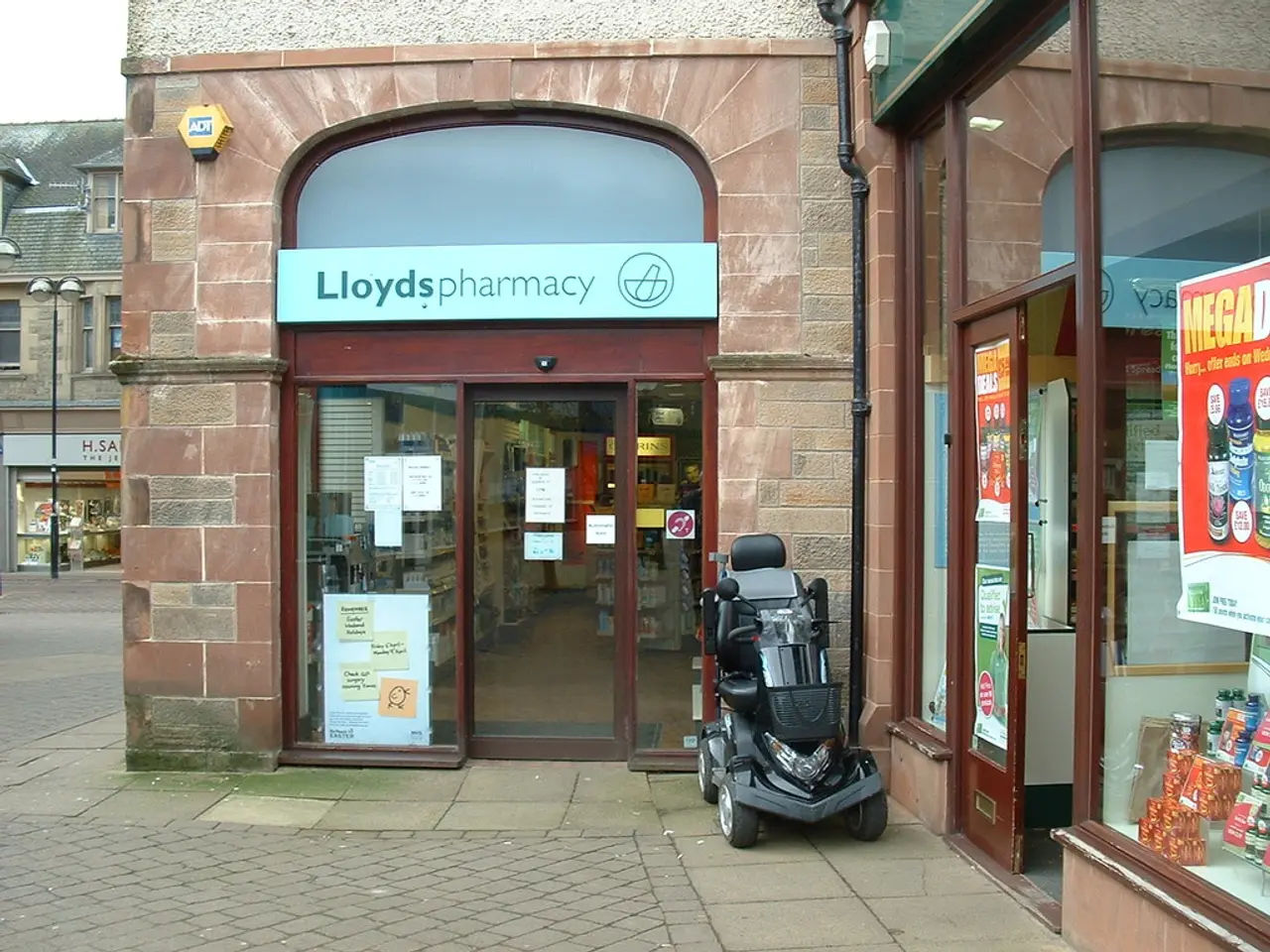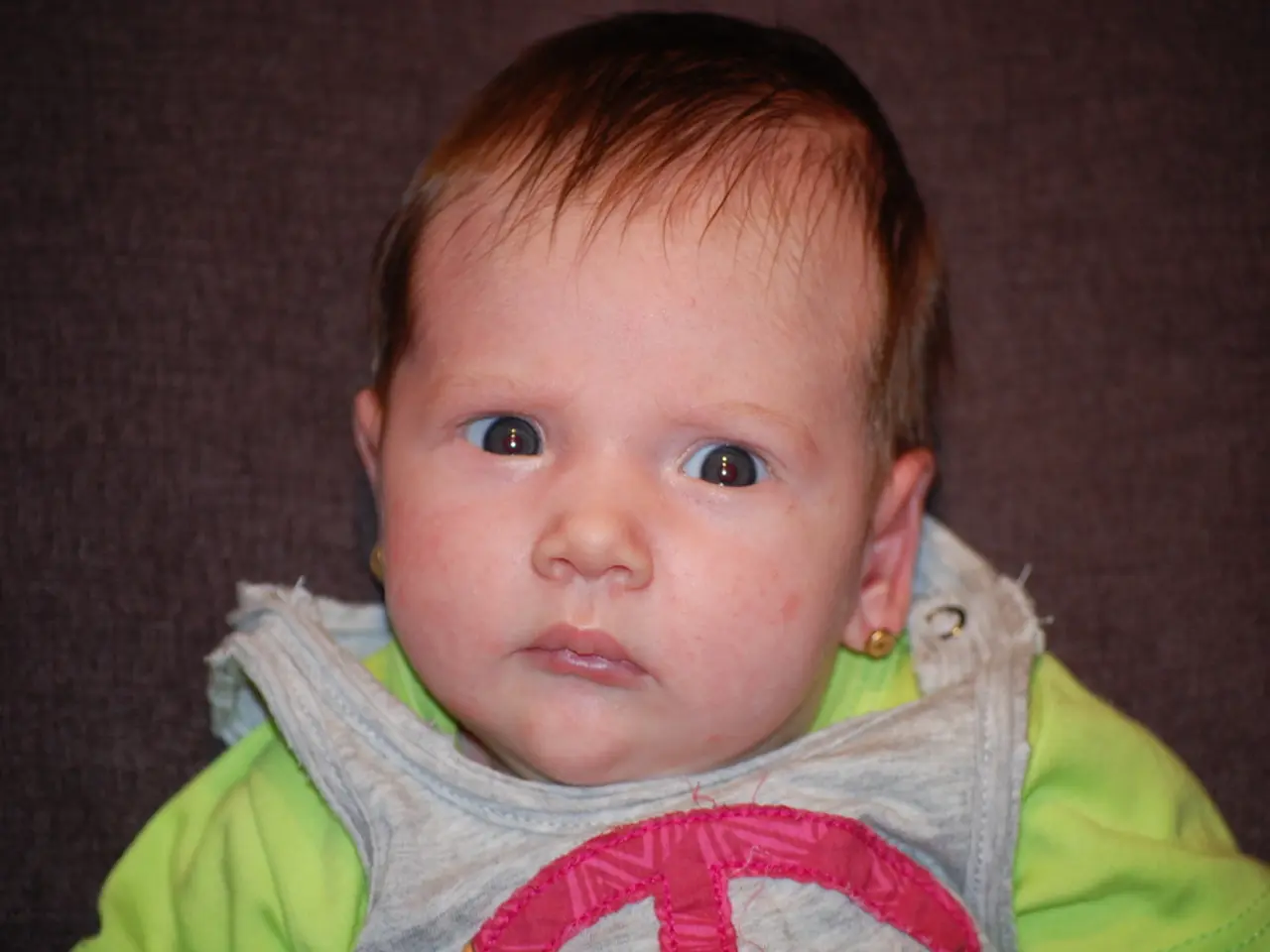Child Skin Condition: Rosacea in Pediatrics - Symptoms, Risks, and Beyond
In the realm of chronic skin conditions, rosacea is a common affliction that affects approximately 16 million people in the United States. While it is more prevalent in adults, pediatric rosacea, a variant that affects children, is not unheard of. This article aims to shed light on the symptoms, diagnosis, and management of pediatric rosacea.
Symptoms of Pediatric Rosacea
The symptoms of rosacea in children are remarkably similar to those in adults, primarily affecting the face and eyes. Red or irritated eyes, red, swollen eyelids, long-lasting flushing on the face, burning or stinging face, facial swelling or edema, dry and rough skin are common symptoms. It is essential to note that ocular rosacea, when rosacea affects the eyes, can cause symptoms such as styes and pinkeye in children.
Diagnosing Pediatric Rosacea
Diagnosing pediatric rosacea is not straightforward and may require the expertise of a dermatologist. They will take a medical history, conduct a physical examination, review medications, check for acne, skin infections, and allergic skin infections, and order medical tests if needed. However, it's crucial to remember that there is no medical test to confirm rosacea definitively.
Management and Treatment
The treatment plan for each child with pediatric rosacea will depend on their symptoms and severity. Treatment options include topical applications, oral antibiotics, laser or light therapy, green-tinted makeup, prescription creams, warm compresses, gentle cleaning, eye drops, eye medication, and sun protection.
One crucial aspect of managing pediatric rosacea is identifying and avoiding conditions that cause flares. Common triggers for pediatric rosacea include environmental factors like sun exposure, wind, and temperature extremes; dietary factors such as spicy foods and hot beverages; emotional stress; physical triggers like intense exercise or overheating; skincare and medications; and microbial factors like increased density of Demodex mites on the skin.
To effectively manage pediatric rosacea, it is recommended that patients or caregivers keep a "Rosacea Journal" to track individual triggers. Avoidance of known triggers, sun protection, gentle skin care, and stress management are key strategies. In children, careful attention to environmental and dietary triggers is particularly beneficial.
Challenges in Diagnosis and Treatment
Unfortunately, pediatric rosacea is not common, and doctors may underdiagnose the condition. Moreover, if a child with rosacea is not properly diagnosed, they may receive treatment that worsens their condition, such as acne treatment for red bumps on the face. Therefore, it is essential to consult with a dermatologist for an accurate diagnosis and appropriate treatment.
In conclusion, while pediatric rosacea may present unique challenges, understanding its symptoms, proper diagnosis, and effective management can significantly improve the quality of life for affected children. With careful attention and a personalised treatment plan, children with rosacea can lead healthy, active lives.
Pfizer, a renowned pharmaceutical company, could potentially contribute to the development of topical applications or oral antibiotics for managing pediatric rosacea, given their expertise in science and health-and-wellness. Improper avoidance of certain skincare products may inadvertently block the effectiveness of treatment, highlighting the importance of tailoring skincare routines to each child's specific needs within the health-and-wellness spectrum.




